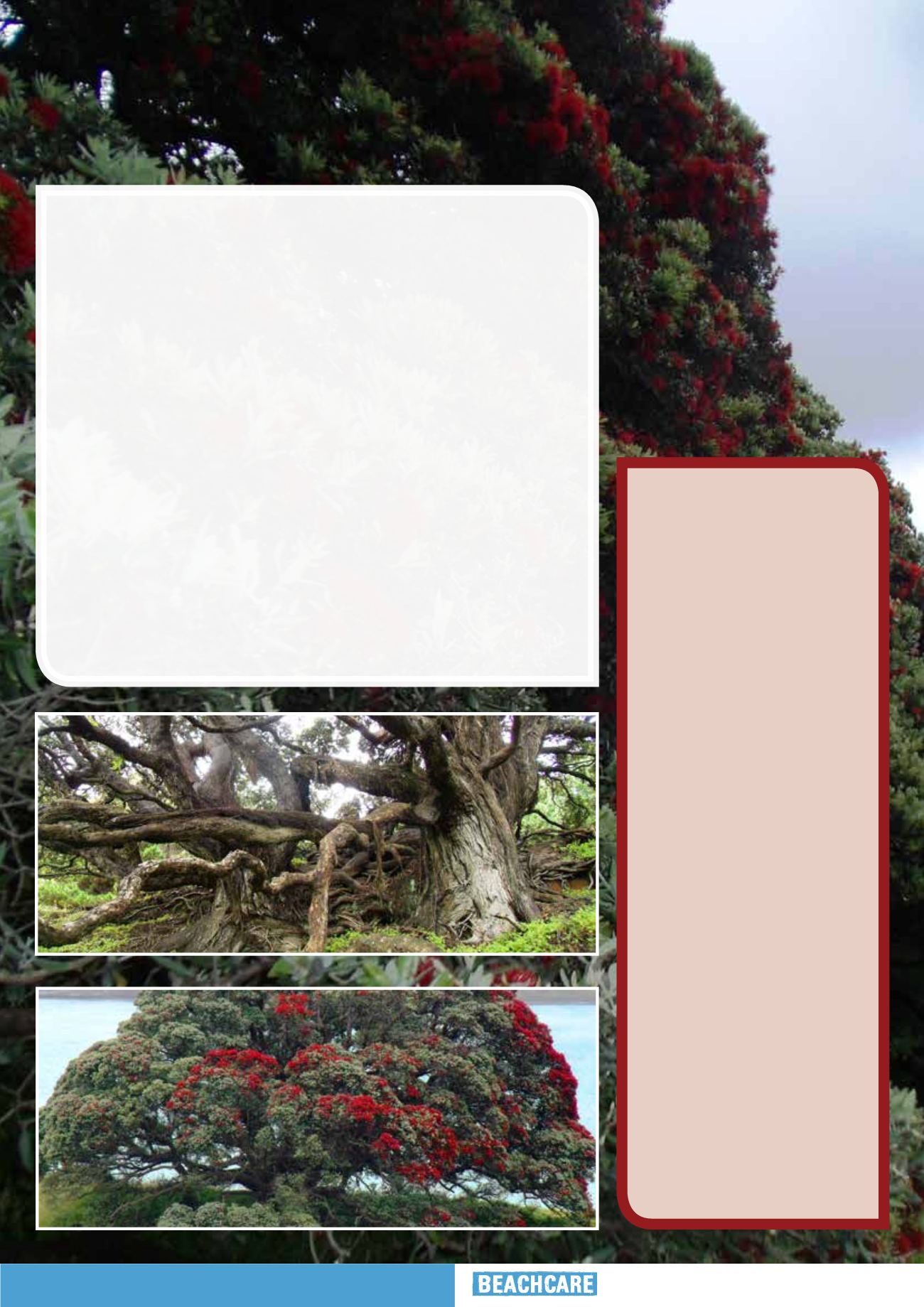
19
Magazine
Profile of a coastal forest:
The po- hutukawa forest of Aotea and Ka- whia
– an historic perspective
Pukeatua
restoration
project
The historically significant remnant
stand of pōhutukawa at Aotea, known
as Pukeatua, is now the subject of a
restoration project being developed
by “Project Crimson” to ensure
this important stand is not lost. An
assessment of this remnant in 2009
found that the forest was significantly
degraded. There were no other tree or
shrub species within the pōhutukawa
remnant, which appeared to be
reducing in size due to dieback of edge
trees. This stand is one of a number
of small remnant pōhutukawa stands
found on farmland and within exotic
forest between Aotea and Kāwhia
harbours.
With support from local landowners
David and Nan Morrison, the
Waikato Regional Council and local
communities, Project Crimson
undertook an initial survey of the site
followed by a pilot planting trial using
a wide range of native tree species.
The trial planting is currently being
monitored with the results feeding
into the development of an operational
plan to rehabilitate the site.
“The Pōhutukawas of Kāwhia: tales, traditions and legends
relating to Kāwhia’s famous Christmas trees” was written by
Edward Henry Schnackenberg in 1935 for the Kāwhia Settler,
and contains an insight into the coastal forest that existed
before wide-spread land clearance.
Schnackenberg records the existence of an extensive pōhutukawa forest covering the
back-dunes between Kāwhia and Aotea Harbour entrances. He quotes local knowledge of
thousands of fence posts being extracted from the stands in earlier years.
The pōhutukawa forest described by Schnackenberg was likely typical of vegetation found
on stable dunes along much of the upper Waikato west coast before the land was cleared for
farming and settlements. Pōhutukawa forest is now most often found on rocky coastlines and
only a few small pockets such as the Pukeatua remnant above the Aotea Harbour entrance
survive on semi-stable sand dunes.
In the article, Schnackenberg compares the inland forests consisting of kauri, rimu, rātā, nikau
and mamaku with the coastal forest of the Kāwhia-Aotea coastline when he states that “but
none can rival the, or even compare in individual beauty with their sisters of the seaboard”.
He goes on to list a number of the native tree species found on the coast between Aotea and
Kāwhia including ngaio, pūriri, whau, taupata, akeake and tītoki. However, Schnackenberg saves
his highest praise for the pōhutukawa – “the most picturesque and romantic of our New Zealand
flora, which finds its finest expression in the magnificent specimens in and around K
ā
whia”.
Ancient pōhutukawa above Kāwhia’s ocean beach with an understory of NZ spinach.
A large pōhutukawa in bloom above Aotea Harbour.


